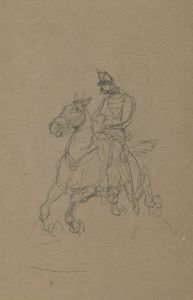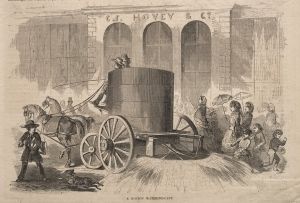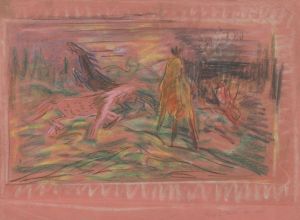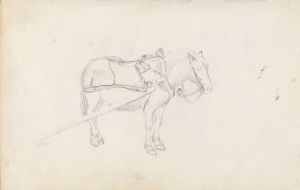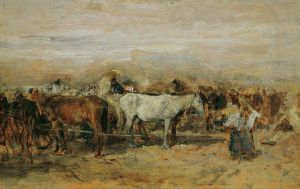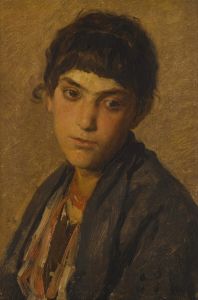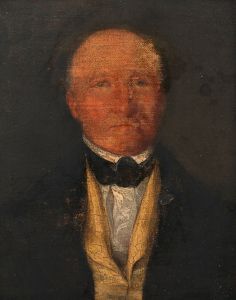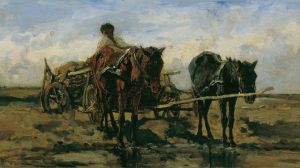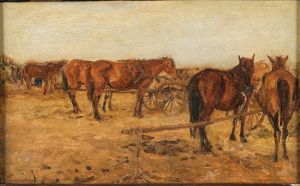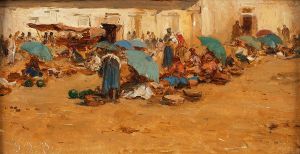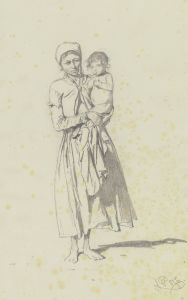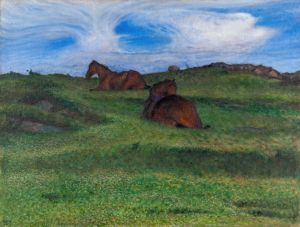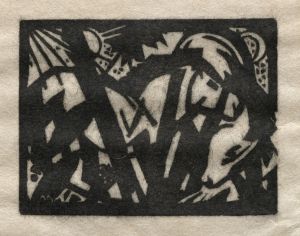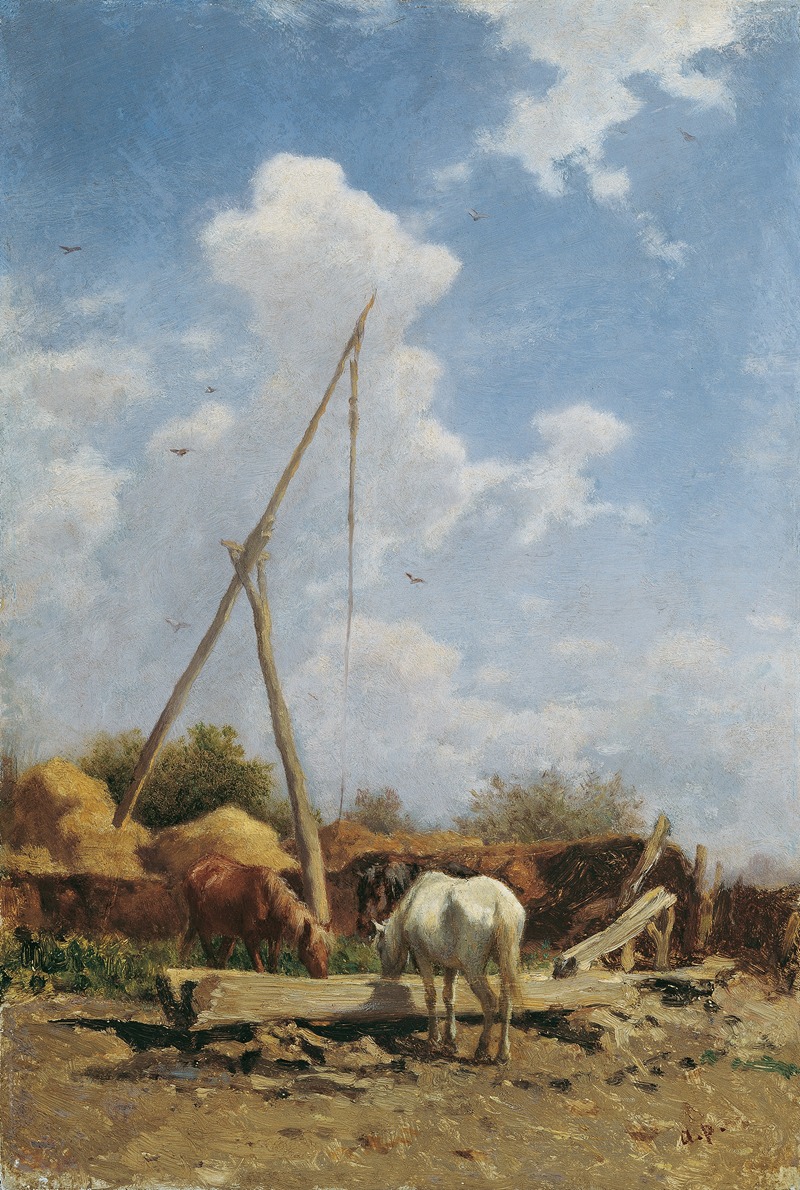
Ungarische Pferdetränke
A hand-painted replica of August von Pettenkofen’s masterpiece Ungarische Pferdetränke, meticulously crafted by professional artists to capture the true essence of the original. Each piece is created with museum-quality canvas and rare mineral pigments, carefully painted by experienced artists with delicate brushstrokes and rich, layered colors to perfectly recreate the texture of the original artwork. Unlike machine-printed reproductions, this hand-painted version brings the painting to life, infused with the artist’s emotions and skill in every stroke. Whether for personal collection or home decoration, it instantly elevates the artistic atmosphere of any space.
August von Pettenkofen was an Austrian painter known for his genre scenes and depictions of Hungarian life. Among his notable works is "Ungarische Pferdetränke," which translates to "Hungarian Horse Watering Place." This painting is a fine example of Pettenkofen's ability to capture the essence of rural life in Hungary during the 19th century.
Pettenkofen was born in Vienna in 1822 and initially trained at the Academy of Fine Arts in Vienna. His early works were influenced by the Biedermeier style, which was characterized by its focus on domesticity and middle-class life. However, his artistic direction took a significant turn after he visited Hungary in the 1850s. The vibrant culture and landscapes of Hungary deeply inspired him, and he began to focus on scenes depicting Hungarian peasants and soldiers.
"Ungarische Pferdetränke" is one of the paintings that emerged from this period of his career. The painting typically features a scene where horses are being watered, a common and necessary activity in rural areas. Pettenkofen's attention to detail and his ability to convey the atmosphere of the scene are evident in the way he captures the interaction between humans and animals. The painting reflects the simplicity and rhythm of rural life, showcasing Pettenkofen's skill in portraying everyday activities with a sense of authenticity and respect for his subjects.
Pettenkofen's work is characterized by a subdued palette and a focus on light and shadow, which can also be seen in "Ungarische Pferdetränke." His use of color and light helps to create a serene and contemplative mood, inviting viewers to appreciate the quiet dignity of rural life. The composition of the painting often draws the viewer's eye to the central activity, while the surrounding landscape provides context and depth.
Throughout his career, Pettenkofen maintained a strong connection to Hungary, frequently returning to the country to find inspiration for his work. His paintings are considered important cultural documents that offer insight into the life and customs of 19th-century Hungary. "Ungarische Pferdetränke" is a testament to his dedication to capturing the spirit of the Hungarian people and their environment.
Pettenkofen's contributions to art were recognized during his lifetime, and he was appointed a member of the Vienna Academy. His works are held in high regard and can be found in various museums and collections, particularly in Austria and Hungary. "Ungarische Pferdetränke" remains a significant piece within his oeuvre, illustrating his mastery of genre painting and his deep appreciation for Hungarian culture.
In summary, "Ungarische Pferdetränke" by August von Pettenkofen is a notable example of 19th-century genre painting that captures the essence of rural Hungarian life. Through his detailed and atmospheric depiction of a simple yet essential activity, Pettenkofen offers viewers a glimpse into the world he so admired and frequently portrayed in his art.





